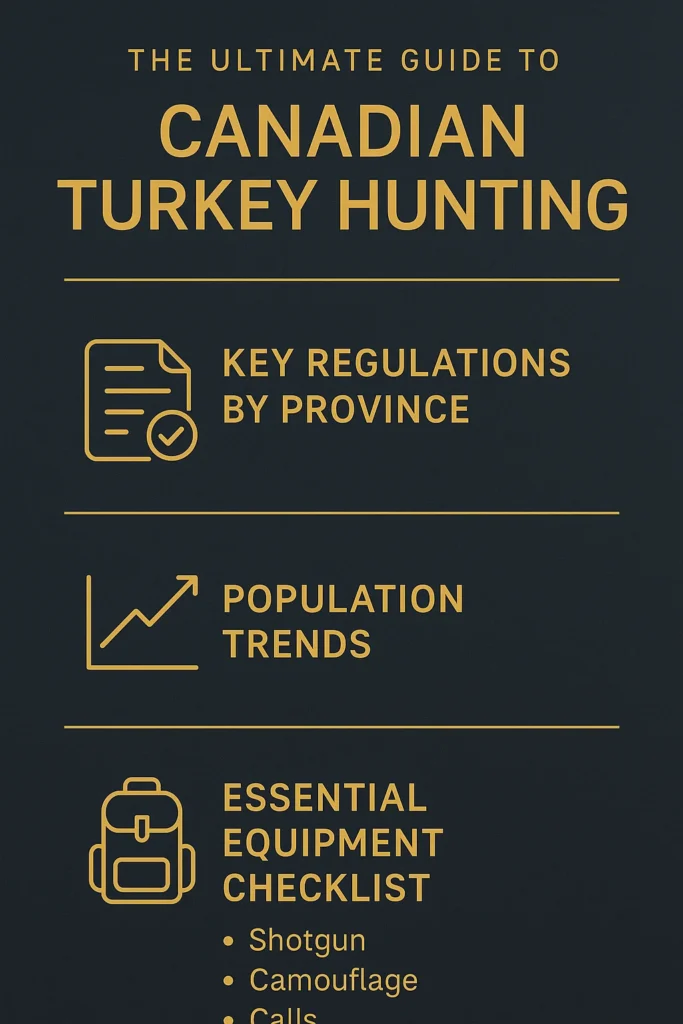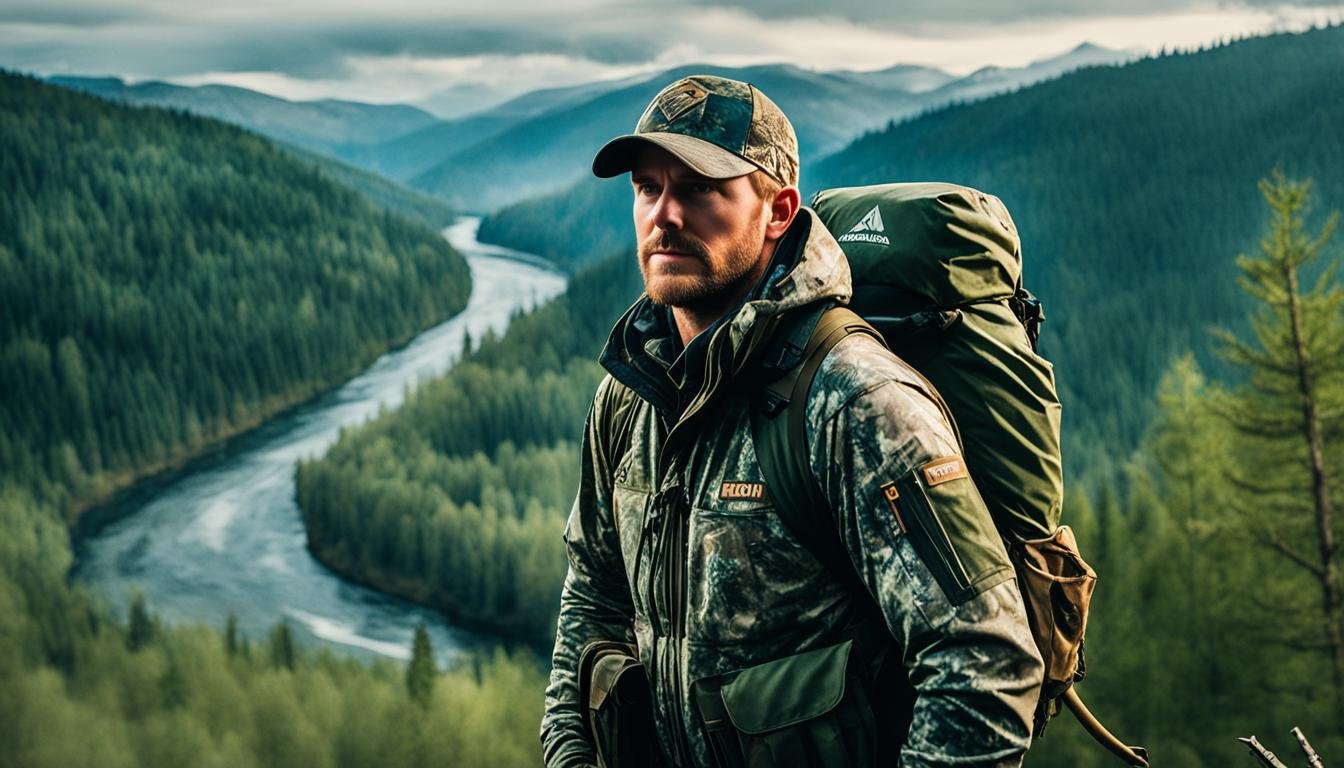Turkey hunting in Canada is a popular outdoor sport. It needs skill and patience. Hunters must understand wild turkey behavior. Rules, seasons, and limits change by province. Always check local laws before you hunt.
Quick Summary: Turkey Hunting in Canada
- You will learn about turkey hunting rules across Canada.
- You will understand different hunting methods and gear.
- You will find out about keeping turkey populations healthy.
Estimated reading time: 6 minutes
Imagine the quiet woods at dawn, waiting for a wild turkey. This exciting activity draws many people. But knowing the rules is key. This guide helps you understand how to hunt turkeys safely and legally in Canada.
Provincial Rules for Turkey Hunting
Rules for turkey hunting change from province to province. It is very important to know the specific laws where you plan to hunt.

Ontario Rules
In Ontario, you can buy up to two spring tags. You can only take one bird per day. For the fall season, you get one tag per hunter. Hunting is allowed from half an hour before sunrise to half an hour after sunset. You can use shotguns, bows, or crossbows.
Make sure your gear meets the rules. You need a valid small game license, which might include a turkey tag. For full details, check the Ontario hunting regulations summary. You can also learn more about getting your hunting license in Ontario.
Quebec Rules
Quebec divides hunting seasons by zone. Rules also depend on the weapon type and the bird’s sex or age. Seasons usually happen in spring and fall. The number of birds you can take changes by zone and season. Shotguns, bows, and crossbows are allowed. They must meet specific conditions. You can find more information on Quebec’s wild turkey hunting seasons.
New Brunswick Rules
The spring season in New Brunswick runs from May 12th to May 24th. There are special rules for Sunday hunting. You can take one bearded male wild turkey per license. Shotguns, bows, and crossbows are okay. But you cannot use bait or organized drives. Read the New Brunswick turkey regulations for more details.
Wild Turkey Populations and Hunting Trends
The number of wild turkeys in Canada changes. There is no exact national data for 2025. But the species is generally doing well. Past years show many turkeys were harvested. The number of hunters has stayed steady. People focus on hunting in ways that keep populations healthy. This is called sustainable hunting.
Hunting Methods and Safety Tips
To be a good turkey hunter, you need certain skills. Safety is also very important.
- Camouflage: Wear clothes that help you blend in. This makes it easier to get close to turkeys.
- Turkey Calls: Use special calls to sound like a wild turkey. This helps attract birds.
- Safety: Always follow safety rules. Wear bright orange when not actively hunting. Respect other hunters. Use your firearms and equipment safely. Learn more about hunting safety tips.
- Know Rules: Always check local provincial rules for seasons and limits.
- Practice Calls: Learn different turkey sounds to attract birds.
- Stay Hidden: Use good camouflage and move quietly in the woods.
- Safety First: Always follow gun safety and wear bright colors when not hunting.
Essential Gear for Turkey Hunting
Having the right gear helps you hunt successfully.
Shotguns are a common choice for turkey hunting. Specific shot sizes are often best. Bows and crossbows are also popular.
They offer a different kind of challenge. You will also need camouflage clothing. Other key items include binoculars and a hunting blind. For more on general hunting gear, check out a hunting gear guide.
Conservation Efforts for Wild Turkeys
Many groups work to keep wild turkey populations strong. They also protect their homes.
- Regulatory Bodies: Provinces work with groups to ensure hunting is sustainable.
- Habitat Preservation: Efforts protect and expand places where turkeys live. This helps them thrive long-term.
- Education Programs: Many groups teach hunters about ethical practices. They also promote conservation. You can learn more about wildlife conservation in Canada from Environment and Climate Change Canada.
Conclusion
Turkey hunting in Canada is a rewarding activity. Rules and seasons differ by province. Always know your local laws. Follow safety rules and ethical practices. This helps ensure a good hunt and healthy turkey populations for the future.
Your Questions About Turkey Hunting Answered (Simply)
Is turkey hunting allowed in Canada?
What do I need for turkey hunting in Canada?
When is turkey hunting season in Ontario?
Can you hunt turkey with a rifle in Canada?
How do you call a turkey for hunting?
Are wild turkeys common in Canada?
What are the rules for turkey hunting in Quebec?



